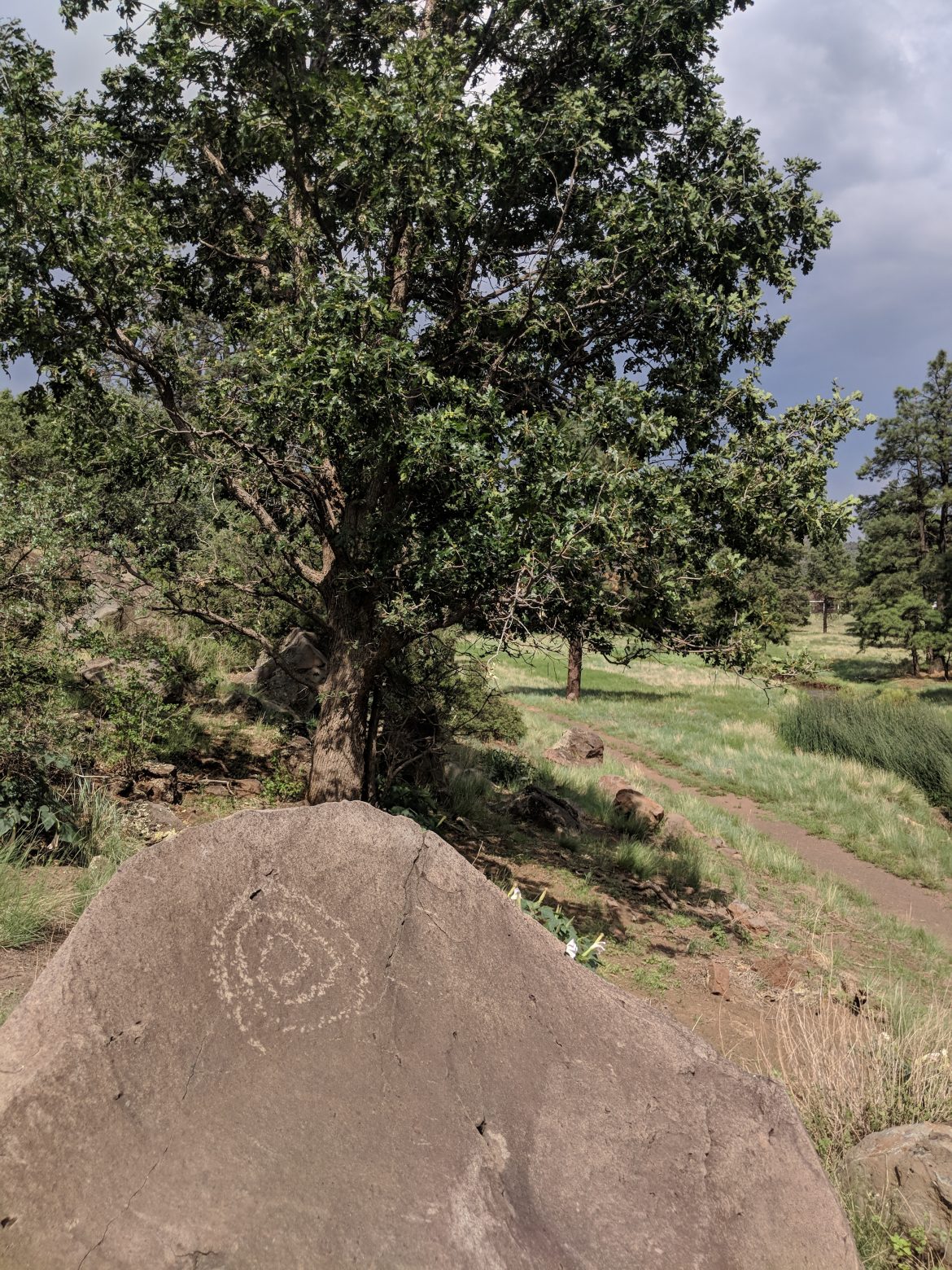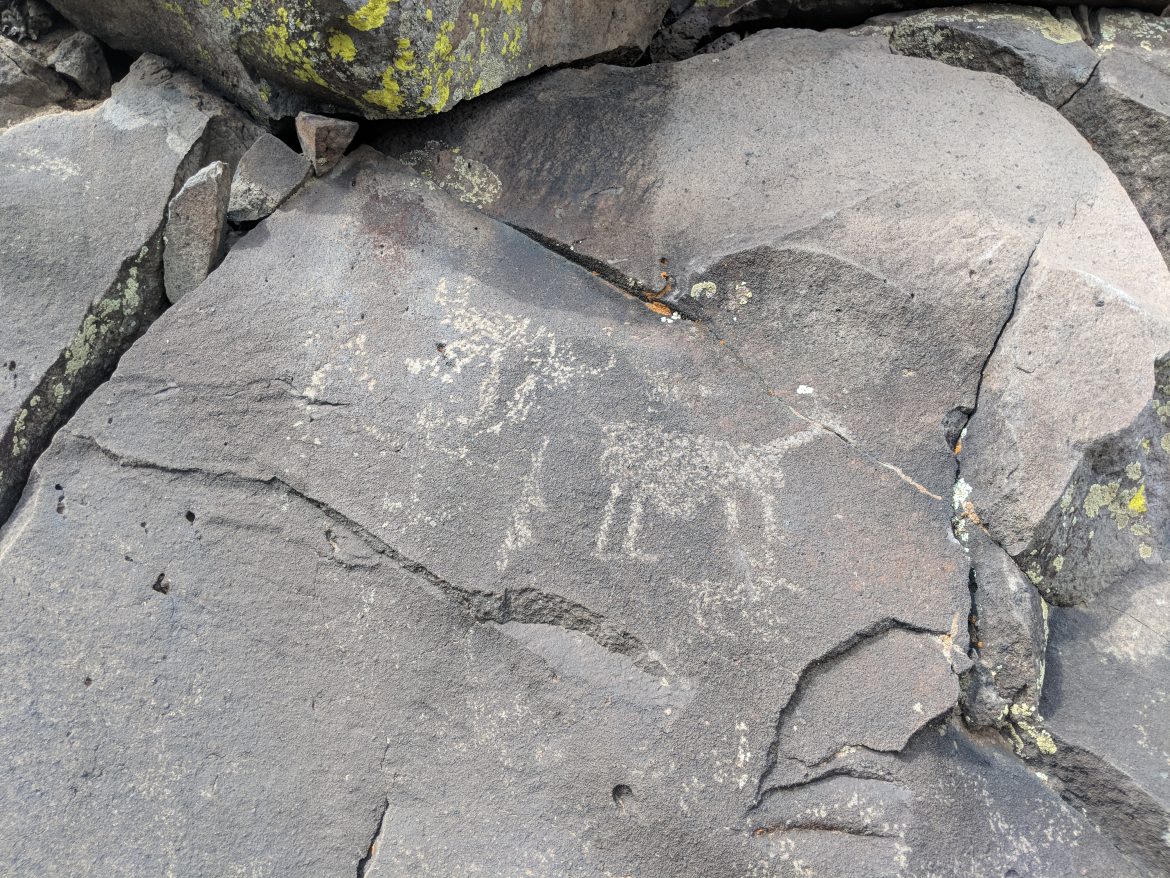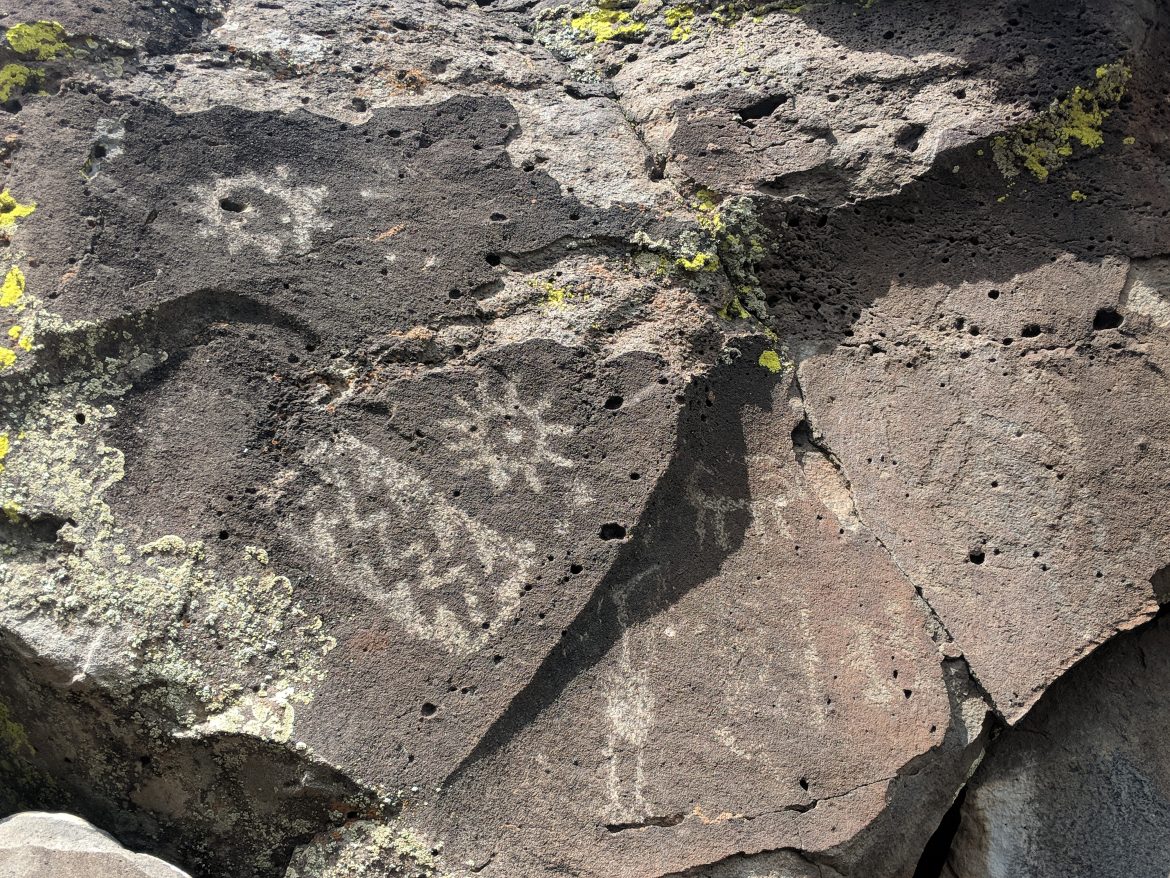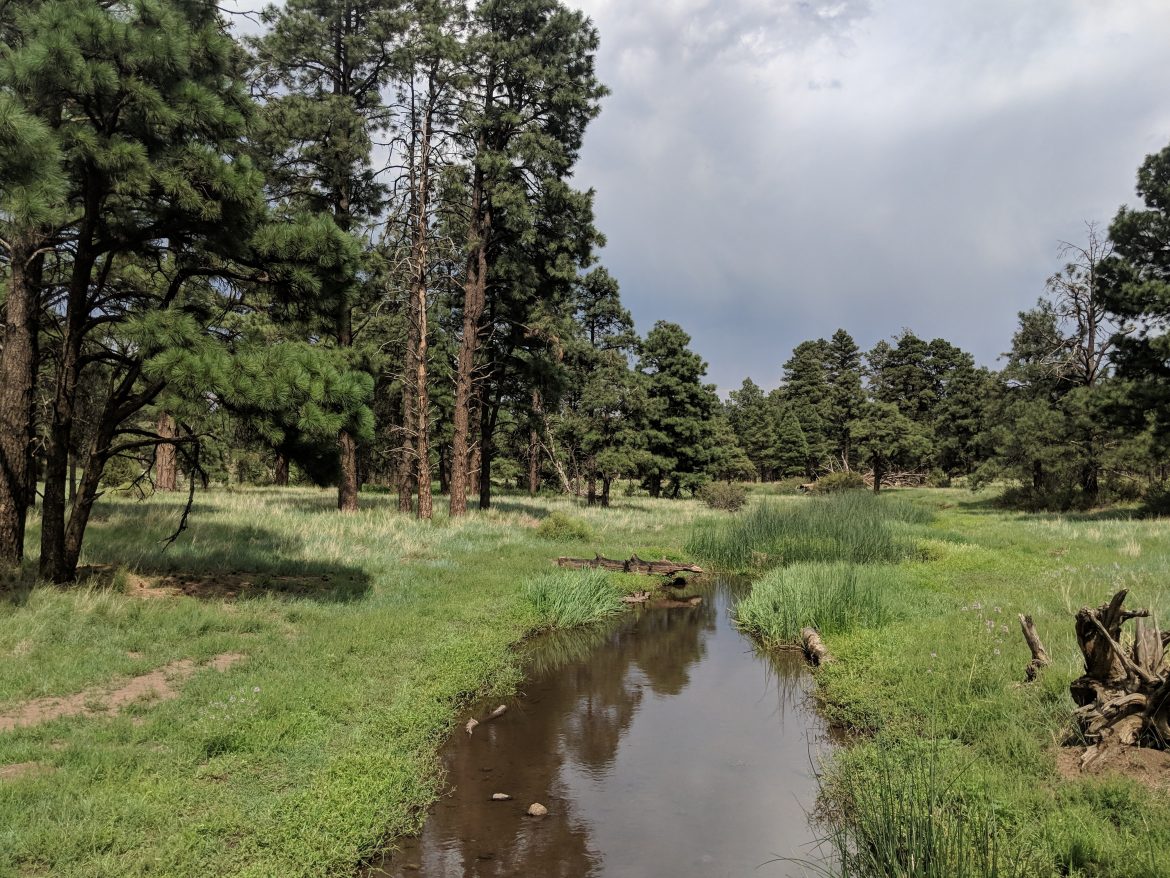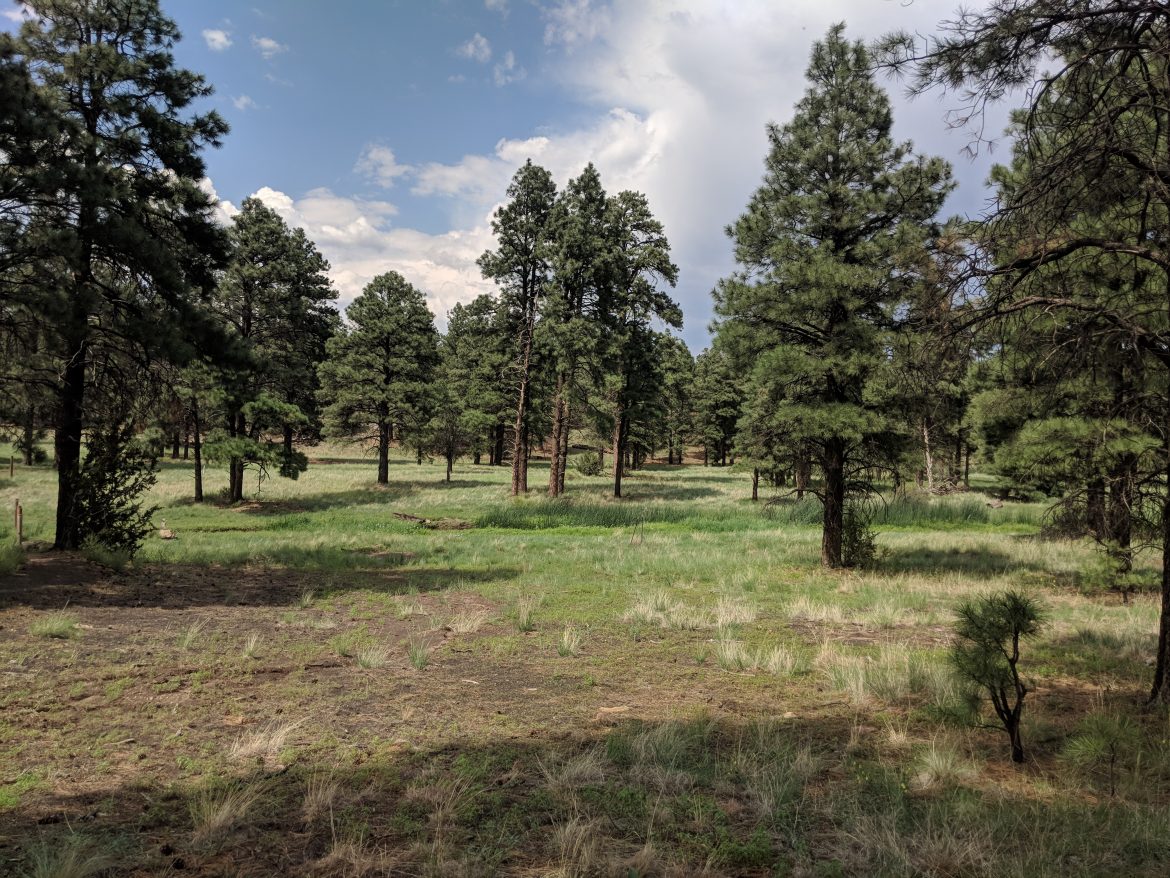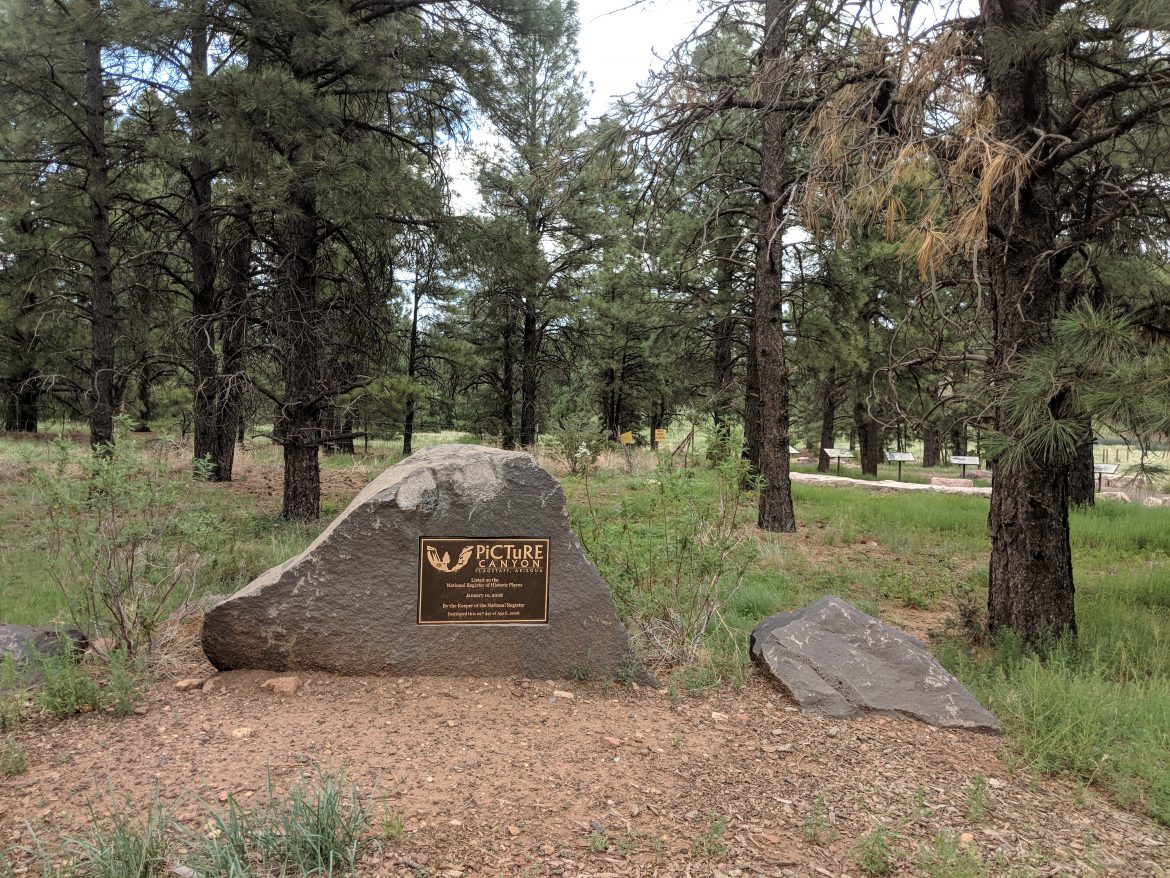Once a locals secret just inside Flagstaff, the only waterfall inside Flagstaff sits inside a now Nature and Cultural Preserve, protected from the encroachment of development and industry. Serving as a quintessential example of a preserve, as the water treatment facility, and cinder mine adjacent to the property were set to encroach into the area before it was protected. The area, despite being inside Flagstaff city limits, and just about right on top of commercial and industrial ventures, still separates the hectic bustle of the city effectively. To the extent that wildlife can often be seen on it’s most populated trails. On my particular visit, a Monday afternoon, I saw a herd of Elk: including a bull, two cows, and a calf.
The namesake of the preserve is the native pueblos and pictographs located in it’s canyon. Of which there is a plethora of petroglyph panels with roots to various modern tribes, including the Zuni and Hopi. There are a few ways to get to the panels, the route I took passed by all the named attractions, including the Waterbird Petroglyph panel, the waterfall, the railroad trestle, the pithouse, and the deep water pond. This route was just at about 2 miles in length to tie together, and took me about a hour and a half. But that time spent was mostly me nerding out about the petroglyphs, I spent a lot of my time there. The paths themselves are signed, and well walked, not difficult to follow, but there is some moderate elevation change, as you start high, and work your way along the rim of a canyon, cross below it, and work your way up to the top of it’s other side. The preserve is only open during daylight hours, no camping or collecting is allowed. Remember to take only pictures, and leave only footprints. You can find out more at this website run by the city of Flagstaff: https://www.flagstaff.az.gov/2881/Picture-Canyon


